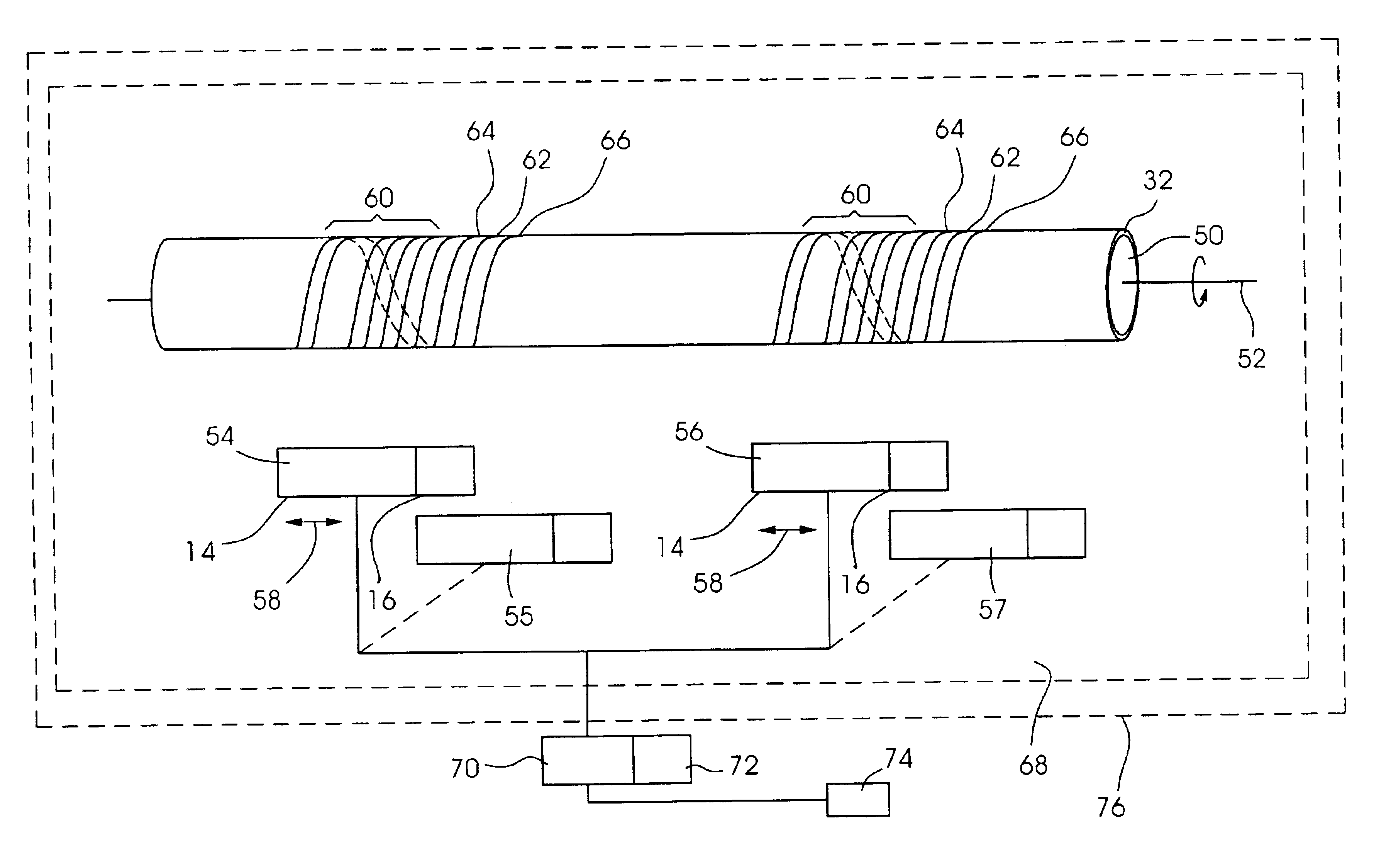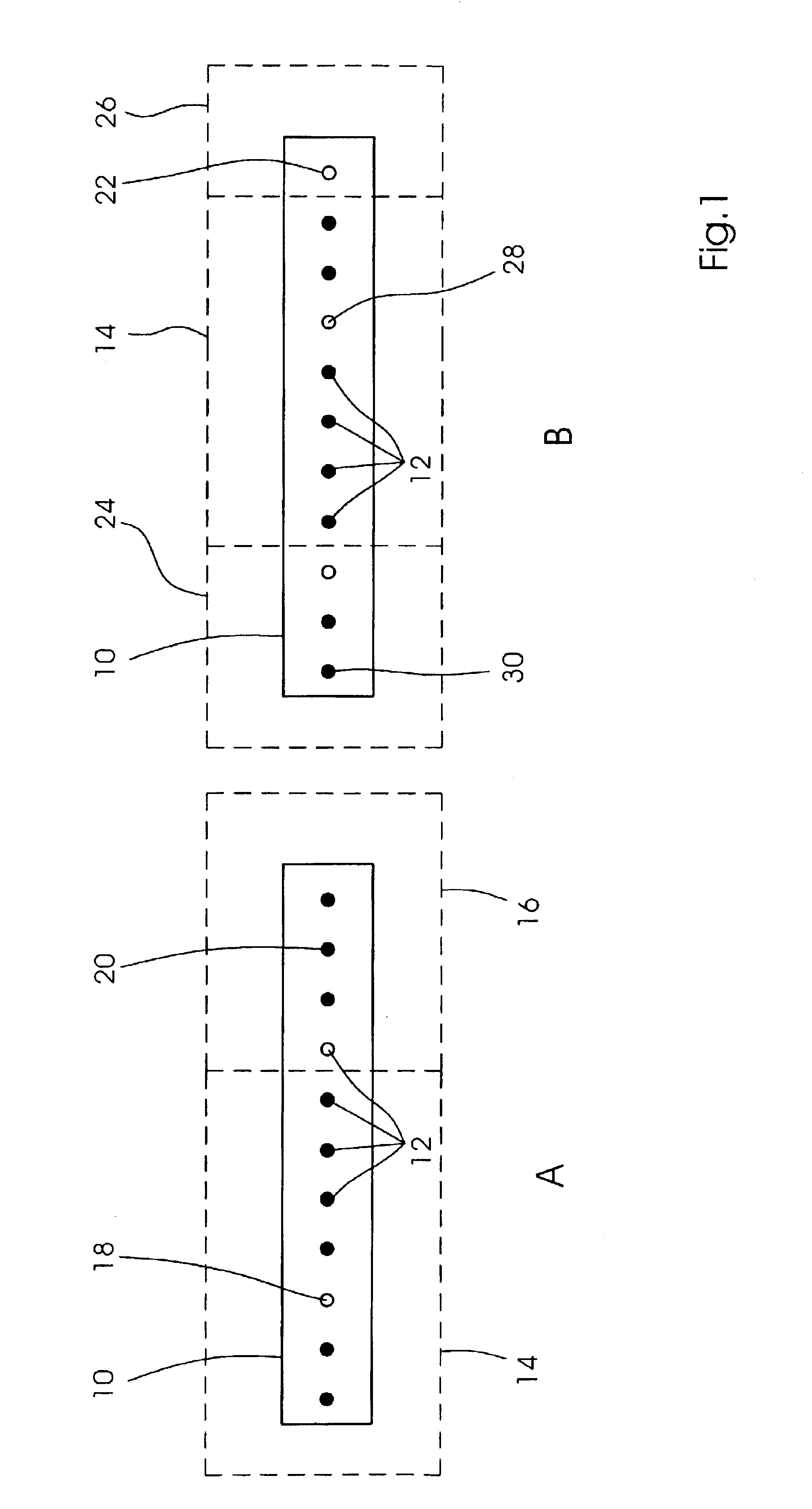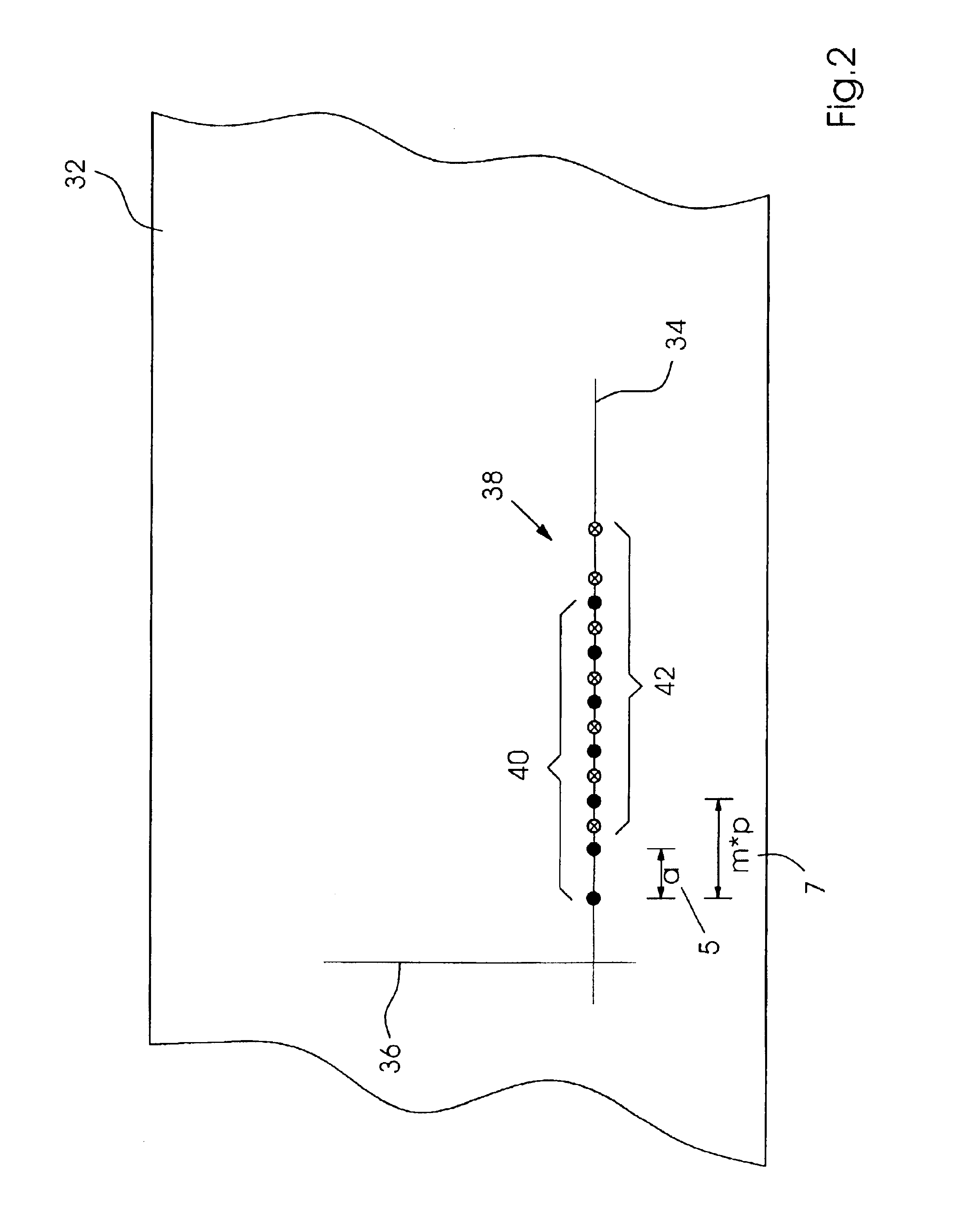Imaging method for printing forms
a printing form and imaging method technology, applied in the direction of printing, microlithography exposure apparatus, spacing mechanisms, etc., can solve the problems of inability to achieve the effect of reducing the number of parallel imaging channels
- Summary
- Abstract
- Description
- Claims
- Application Information
AI Technical Summary
Benefits of technology
Problems solved by technology
Method used
Image
Examples
Embodiment Construction
activated, into the main field and into the auxiliary field,
[0036]FIG. 2 a schematic imaging of the position of rows of printing dots on the surface of the printing form,
[0037]FIG. 3 an imaging by means of the auxiliary field of the laser diode bar at a first time of a first part of a first row of printing dots, and an imaging by means of the main field of the laser diode bar at a second time of a second part of the first row of printing dots, and of a first part of a second row of printing dots, and
[0038]FIG. 4 two imaging devices with laser diode bars for the imaging of a printing form in a printing unit that is received by a printing form cylinder, whereby the laser diode bars are divided into the main fields and into the auxiliary fields in order to perform an imaging corresponding to the method according to the invention.
DETAILED DESCRIPTION
[0039]FIG. 1 shows divisions of an exemplary laser diode bar, on which the laser diodes are not activated, into the main field and into the...
PUM
| Property | Measurement | Unit |
|---|---|---|
| distance | aaaaa | aaaaa |
| time tm | aaaaa | aaaaa |
| tm | aaaaa | aaaaa |
Abstract
Description
Claims
Application Information
 Login to View More
Login to View More - R&D
- Intellectual Property
- Life Sciences
- Materials
- Tech Scout
- Unparalleled Data Quality
- Higher Quality Content
- 60% Fewer Hallucinations
Browse by: Latest US Patents, China's latest patents, Technical Efficacy Thesaurus, Application Domain, Technology Topic, Popular Technical Reports.
© 2025 PatSnap. All rights reserved.Legal|Privacy policy|Modern Slavery Act Transparency Statement|Sitemap|About US| Contact US: help@patsnap.com



